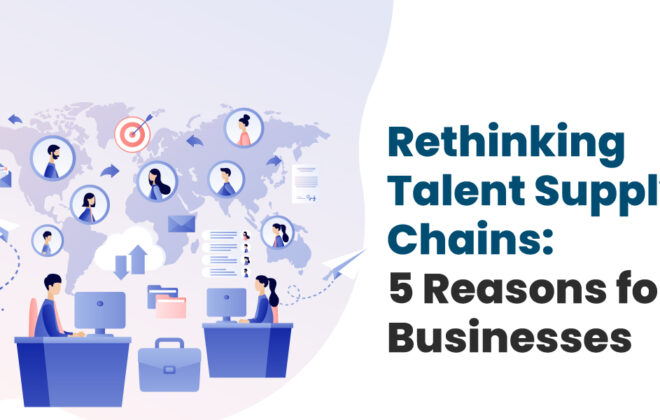6 Proofs Leveraging Gig Workers can Transform your Business

The gig economy and robotics and cognitive technologies—the new workforce.
The gig economy is enlarging and that is quite evident. According to Forbes, over one third (36 percent) of U.S. workers are in the gig economy, which works out to a huge number of about 57 million (approx 53 million in 2014) people. In fact, it is projected that in 2027, 86.5 million people will be gig workers in the United States and will make up 50.9 percent of the total U.S. workforce (Source: Statista).
The gig economy has opened a world of opportunities for women, minorities, and people living in emerging nations.
|
This isn’t about some ‘far future’ of work – change is already happening, and accelerating. – PwC |
While the benefits to workers are quite clear – flexibility, opportunity to choose projects as per one’s interest and ability to work remotely, it is businesses that are honestly benefitting the most from the gig economy. However, the level of adaptation may differ from business to business.
As per a study conducted by Buffer Stories, companies were either uncertain to embrace remote work with 10% or fewer gig workers, or have fully adopted this model with more than 90% of their resources working remotely.
Looking for contingent workforce solutions?
TALK TO US
Benefits of Gig Economy for Employers
Remote workers stay longer, work harder, and offer better ROI over co-located employees. The freedom to work from when and where you want is one of the most desired benefits employees have — which also help companies keep our attrition rates low. Even big market players like Airbnb, Uber, Lyft, and Etsy are employing freelancers/gig workers to get their work done.
What are some of the true benefits for businesses to enter and invest in the gig economy?
-
Great customer experience and engagements
The gig-based customer service work that is flexible, goes a long way in creating better user experience and engagements. Because they are experts, who are also the consumers of the same products and services. Therefore, they can provide the most honest and sound solution to customer problems. This, in turn, improves customer experience and in turn better customer engagements.
For instance, Today’s customer expects much more from the company in terms of service, and companies are struggling to meet their increasing expectations. This is especially true in the e-commerce industry, where the customer expects solution/answer in seconds and minutes. Therefore, several retailers have embraced gig economy, which allows them to assign their product experts to answer support questions on products they use every day, and “giggers” can answer those queries from anywhere – while dining, or from the comfort of their homes.
-
Access to a wider market
Flexibility is one of the many significant benefits of gig economy. Since this giggers usually work remotely and depend on mobile devices, they can be scaled anywhere. Since they are not limited to certain office locations, they are willing to travel distances to where is the user is located to deliver a product or service. This provides firms an opportunity to expand their reach and touch markets that they couldn’t reach earlier.
-
Brand new opportunities

Most business owners come to a point where they have to make difficult choices about what’s beyond their scope, and which new market to explore to attract newer and bigger clients. Let’s take an example you have a startup. You already have a big client, and you are eager for a long-term partnership with you. But they want all of their marketing collaterals to be done in both English and Spanish. A language that your staff is not familiar with, and you are a startup with budget constraints to hire new members to get the work done. Now what? Instead of losing the client to your competitor, you can use the gig economy to your advantage. You can approach a seasoned contingent recruitment firm, who can help you find a team of good temporary translators to finish the project.
-
Leveling the podium
With the gig economy, companies can operate like large corporations without the overhead. It gives the small companies a great opportunity to try skilled workers on a temporary basis, without paying a full-time salary and benefits. As per KellyOCG, 43% of companies are saving a minimum of 20% only in labor cost by employing gig workers. According to the Bureau of Labor Statistics, the cost of employee benefits alone, make up 31.7% of the average employees’ net compensation package. Companies who hire freelancers are usually able to cut these costs. Additionally, they must also be able to take up new projects and deliver quality within the given timeframe to stay competitive. So, by hiring gig workers companies can achieve their goals without hiring permanent employees. This is where temporary staffing services come to your rescue.
-
Achieving business goals
Contingent workforce helped 42% of both big and mid-size companies meet their seasonal needs for talent. During Christmas 2017, Amazon hired more than 120,000 (most of them were temporary), workers. In fact, a large number of other retailers too added gig workers during the peak seasons to help them fill orders. Scalability and flexibility are the two most important benefits of hiring contingent workers.
Many businesses deal with their fluctuating need for talent by working with a good contingent staffing company. It is especially true for fully seasonal businesses like those in construction, or light or heavy industrial, where the need for on-demand talent is typically high yet fluctuating. -
Saves hiring time and cost
According to Forbes, 36% of organizations use gig workers/freelancers for the timing benefits. A considerable amount of time is involved in hiring a new resource. A company has to follow a lengthy recruitment process, starting from shortlisting, the background check to onboarding procedure to hire a permanent employee. On the contrary, it takes significantly less time to add a freelancer to a project. Onboarding gig workers mean spending relatively less money and time up front to get the work done.
Benefits of Gig Workers – In a nutshell,
The gig economy is certainly one of the biggest and blooming workforce trends. Businesses can stand to save both labor and hiring costs by adopting this shift. With this trend, companies tend to allure a big chunk of the present and emerging workforce.
In need of a temporary workforce?
REQUEST TALENT
Liked what you’ve just read? Why not subscribe to our knowledge base for more such interesting reads.
Tags In
Subscribe For Updates
Categories
- Accountant
- AI
- Automation
- Awards and Recognitions
- Blue Collar Staffing
- Burnouts
- Campus Recruiting
- Cloud
- Co-Ops agreements
- Company Culture
- Compliance
- contingent workforce
- Contingent Workforce
- COVID-19
- Cyber Security Staffing
- Data Strategy
- Digital Transformation
- direct sourcing
- Distributed Workforce
- Diversity
- Diversity & Inclusion
- Economy
- Events & Conferences
- fleet industry
- Gig Economy
- Girls in Tech
- Global Talent Research and Staffing
- Government
- Healthcare
- Healthcare Staffing
- Hiring Process
- Hiring Trends
- Home Helathcare
- HR
- HR Practices
- HR Tech
- IT
- Labor Shortages
- Life Science
- Local Governments
- News
- Nursing
- Payroll Staffing
- Public Sectors
- Recruiting
- Remote Work
- Skill Gap
- SMB Hiring
- Snowflake
- Staffing
- Staffing Augmentation
- Staffing Challenges
- Talent ROI
- Tech Staffing
- Technology
- Tips & tricks
- Total Talent Management
- UI/UX Design
- Uncategorized
- Veteran Staffing
- Veterans Hiring
- Veterans Hiring
- Workforce Management
Recent Posts
- Automation in Recruiting: From Chatbots to Predictive Screening
- Gig Economy Expansion: The Impact on Talent Pools and Business Models
- Skills-Based Hiring: Why Credentials Alone Don’t Cut It in 2025
- Procurement 3.0: AI & Intelligent Automation in 2025
- Q3 Is Here: Is Your Contingent Workforce Strategy Falling Behind?
Newsletter
Archive
- September 2025
- August 2025
- June 2025
- April 2025
- March 2025
- December 2024
- November 2024
- October 2024
- September 2024
- August 2024
- July 2024
- June 2024
- May 2024
- April 2024
- March 2024
- February 2024
- January 2024
- December 2023
- November 2023
- October 2023
- September 2023
- August 2023
- July 2023
- June 2023
- May 2023
- April 2023
- March 2023
- February 2023
- December 2022
- November 2022
- October 2022
- September 2022
- August 2022
- July 2022
- June 2022
- November 2021
- October 2021
- September 2021
- August 2021
- July 2021
- June 2021
- May 2021
- April 2021
- March 2021
- February 2021
- January 2021
- December 2020
- November 2020
- October 2020
- September 2020
- August 2020
- July 2020
- June 2020
- May 2020
- April 2020
- March 2020
- February 2020
- January 2020
- December 2019
- November 2019
- October 2019
- September 2019
- August 2019
- July 2019
- June 2019
- May 2019
- January 2019
- December 2018
- November 2018
- October 2018
- September 2018
- August 2018
- July 2018
- June 2018
- May 2018
- April 2018
- March 2018
- February 2018
- January 2018
- December 2017
- November 2017
- October 2017
- September 2017
- August 2017
- July 2017
- June 2017
- May 2017
- November 2016
- October 2016



